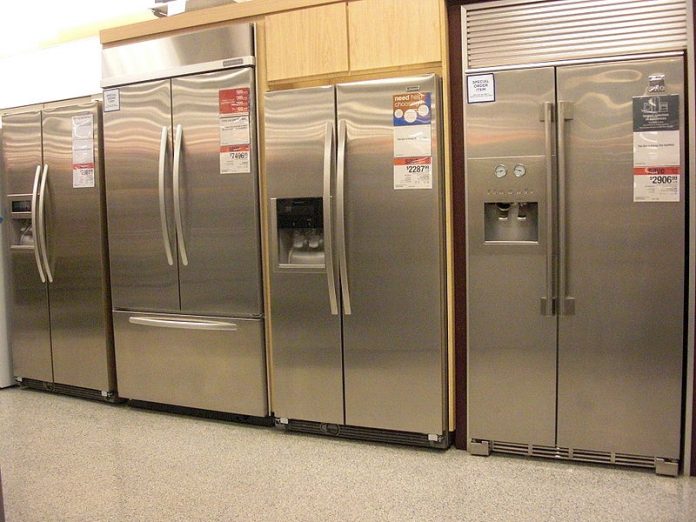Commentary
A group of 17 leading free market advocacy organizations is telling the U.S. Environmental Protection Agency (EPA) to modify and repropose its faulty phase-out rules for the widely used, relatively inexpensive, non-toxic class refrigerants, Hydrofluorocarbons (HFCs).
These rules were recently proposed under the so-called American Innovation and Manufacturing (AIM) Act passed in December. EPA is rushing the rule making, with final rules due out in September.
The call for reform comes in the form of formal comments submitted on EPA’s proposed phase-out regulations.
The lead author of the comments is Ben Lieberman from the Competitive Enterprise Institute (CEI). The Committee for a Constructive Tomorrow (CFACT), which co-publishes Environment & Climate News, is among the 17 groups signing on to CEI’s comments.
‘War on Refrigeration’
The focus of the comments is on what Junk Science guru Steve Milloy calls “The war on refrigeration.” I present some portions of the comments below, along with my analysis of them.
“The AIM Act imposes limits on the future production of hydrofluorocarbons (HFCs), and does so on the grounds that they contribute to climate change,” Lieberman writes on behalf of the 17 research institutes. “The economic impacts will be very significant and widespread, as HFCs are the class of refrigerants used in hundreds of millions of air conditioning and refrigeration systems.
“Keeping this equipment in operation will cost considerably more because of these provisions” say the comments. “In addition, new equipment designed to use alternative refrigerants with lower global warming potentials (GWP) carries a price premium and will likely continue doing so as competition with the HFC-using systems currently dominating the market is increasingly constrained.”
This is a cap-and-trade system, under which government controls the rationing of HFC chemicals, but ration cards can be bought and sold, a system favoring the wealthiest companies.
‘Complex Rationing’
The rationing is on a scale and of a complexity far greater than anything EPA has ever done.
“While some of … cost increases are unavoidable, we believe that the [proposed HFC rules] exacerbates others through incorrect and/or unnecessarily aggressive interpretations of the law,” writes Lieberman. “Among them is the agency’s proposed means of determining the baselines of past HFC production from which the future percentage restrictions are calculated.
“The chosen method is likely to lead to an undercount and thus more stringent HFC quotas than the statute envisioned,” CEI says.
When it comes to establishing the ever diminishing allowed ration of HFCs, the AIM Act creates two huge problems EPA has thus far failed to resolve. First, AIM is based on the 2014 Kigali Amendment to the Montreal Protocol, which the U.S. never adopted. It is Kigali by the back door.
As a result the opening ration to be establise, called the baseline, will be based on data from 2011 to 2013, nearly ten year old data. It turns out EPA has very little data from that time and the limited data they propose to use is likely to make the baseline ration far too small.
Second the AIM Act exempts a number of industries from the reduced rationing at this time. But EPA plans to still subtract their portion of HFC use from the established baseline and declining rations, meaning the industries not exempted will see far bigger cuts in their rations than the law specifies.
Costs Understated
“The … Regulatory Impact Analysis (RIA) … grossly understates the costs of the rule – and indeed makes the irrational claim that there are no net compliance costs,” says CEI’s comment. “At the same time, the RIA overstates the climate change-related benefits of the rule.
“Perhaps most one-sided of all are the environmental justice claims which completely ignore the disproportionate impact of costlier air conditioning on low income households and communities,” CEI writes.
The so-called environmental justice provision is a new analysis, and EPA’s is indeed atrocious. The supposed benefits for the poor are in reduced climate damages over the next 300 years. The very real costs will be borne immediately by the poor living today and in the coming decades. Claiming benefits that accumulate 300 years in the future as if they were in fact knowable, and as if they outweigh the present costs of the policies imposed now is simply absurd. Even worse, EPA does not include an impact analysis of the costs the rule will impost on the poor now or in the future.
CEI et al.’s comments end with a petition to EPA, saying:
“The … implementation scheme for the AIMAct … goes well beyond the statute’s provisions,” the comments say. “Most notably, its formula for determining the baselines for HFC production and consumption will lead to an undercount that is at odds with statutory intent.
“Furthermore, [it] relies on an RIA that ignores costs and overstates the environmental,” says the comments. “Given the potential adverse impacts on consumers and businesses, we urge that a supplemental [proposed rulemaking] and RIA be issued that remedies these flaws before any rule is finalized.”
Other commenters have also asked for a revised proposal from EPA, including myself. If this is not done the whole rule making may wind up in Court.
Stay tuned as this regulatory drama unfolds.
David Wojick, Ph.D. (dwojick@craigellachie.us) is an independent analyst working at the intersection of science, technology and policy, who writes for CFACT.
Internet Info
Ben Lieberman, et al., “Coalition Comments on Phasedown of Hydrofluorocarbons: Establishing the Allowance Allocation and Trading Program Under the American Innovation and Manufacturing Act; Proposed Rule,” Competitive Enterprise Institute, July 6, 2021; https://www.heartland.org/publications-resources/publications/phasedown-of-hydrofluorocarbons-establishing-the-allowance-allocation-and-trading-program-under-the-american-innovation-and-manufacturing-act-proposed-rule


























